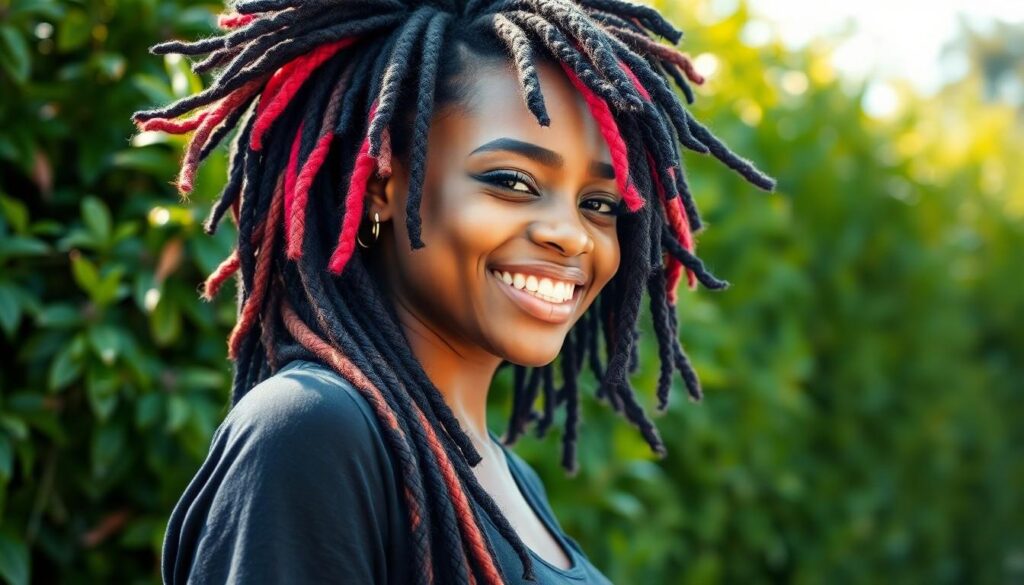Freeform dreads aren’t just a hairstyle—they’re a bold statement of individuality and self-expression. Whether we’re drawn to their effortless look or the powerful message behind them, there’s something magnetic about letting our hair take its natural course. Freeform dreads invite us to embrace authenticity and celebrate our natural texture in a industry that often pushes conformity.
If we’ve ever wondered how to start freeform dreads or what it really takes to maintain them, we’re not alone. There’s a lot of curiosity and even more misconceptions out there. Let’s explore the essentials so we can confidently rock this unique style and make it truly our own.
Understanding What Freeform Dreads Are
We call freeform dreads a completely natural approach to locking hair. Unlike salon styles that rely on manipulation, products or tools, this method lets our hair form organic locks on its own over time. Hair starts to mat and knot through regular washing and air drying, without forceful separation or twisting.
Some of us notice unique patterns as our hair sections itself into various sizes and shapes. Each set of freeform dreads turns out different, reflecting our own texture and scalp patterns. Ignoring uniformity, we let frizz and irregular sections exist because that’s the essence of this style.
People interested in freeform dreads often avoid heavy products and frequent combing. We trust water, gentle cleansing and patience to bring out our hair’s natural locking process. Over months or even a few years, these dreads mature and tighten, creating shapes and widths only our hair could produce.
Choosing freeform dreads is about more than low maintenance. It connects us with centuries-old traditions, especially those rooted in Black culture and spirituality. The look stands out as a symbol of authenticity, inviting self-acceptance and a break from mainstream hair standards.
Anyone can grow freeform dreads, but results depend on our unique hair types and dedication to minimal interference. Different routines work for different people, but the core idea is always letting our hair express itself, free from imposed structure or expectation.
Exploring the History and Cultural Roots of Freeform Dreads
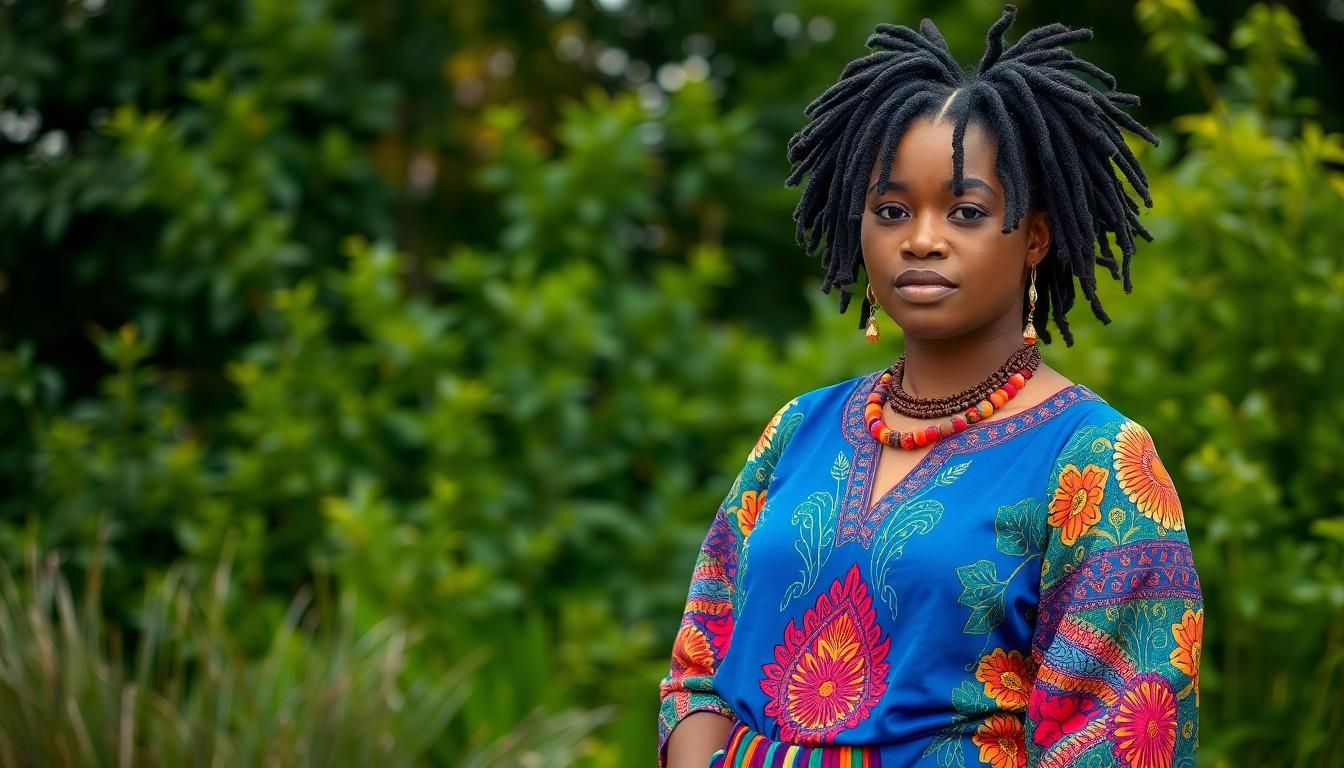
We see freeform dreads popping up everywhere today, but their story goes way back—think ancient Egypt and India around 2500 BC. Ancient Egyptian tombs show pharaohs with matted hair, and in Hindu culture, the Sanskrit word “jaṭā” describes these natural locks. Other civilizations like the ancient Greeks embraced similar styles, showing just how universal this look has always been.
Moving through history, we find the Rastafari movement in Jamaica during the 1960s and 1970s setting the stage for freeform dreads as we know them now. Bob Marley’s iconic look turned these dreads into a worldwide symbol of resistance, spirituality, and African heritage. Our understanding grows deeper when we realize these locks represented more than fashion—they became a statement, defying societal pressure and connecting people to their roots.
Reggae exploded internationally in the 1980s and 1990s, and so did the recognition of freeform dreads. Celebrities such as Whoopi Goldberg and Lenny Kravitz brought the style to red carpets and stages, cementing its presence far beyond its Caribbean origins.
Fast forward to today and we spot artists like J. Cole, The Weeknd, and Zendaya rocking freeform dreads across music, movies, and fashion. Our culture now sees this hairstyle as both a personal and communal badge—one with strong spiritual ties to movements like Rastafari and a proud symbol within Black and African diasporic identity.
Some people call them “jaṭā” in India, “ndiagne” and “ndjan” in Wolof, or “dada” in Yoruba—every name reflects a deep cultural connection. The word “dreadlocks” itself has a layered backstory, possibly linked to Jamaican Creole or even to the Mau Mau in 1959, but always tied to the notion of hair that defies social norms.
What’s powerful is how freeform dreads carry centuries of meaning—from spirituality to social resistance—proving this style is far more than a passing trend. Each time we wear, admire, or discuss these dreads, we’re carrying a long, rich legacy with us.
Choosing Freeform Dreads: Reasons and Benefits
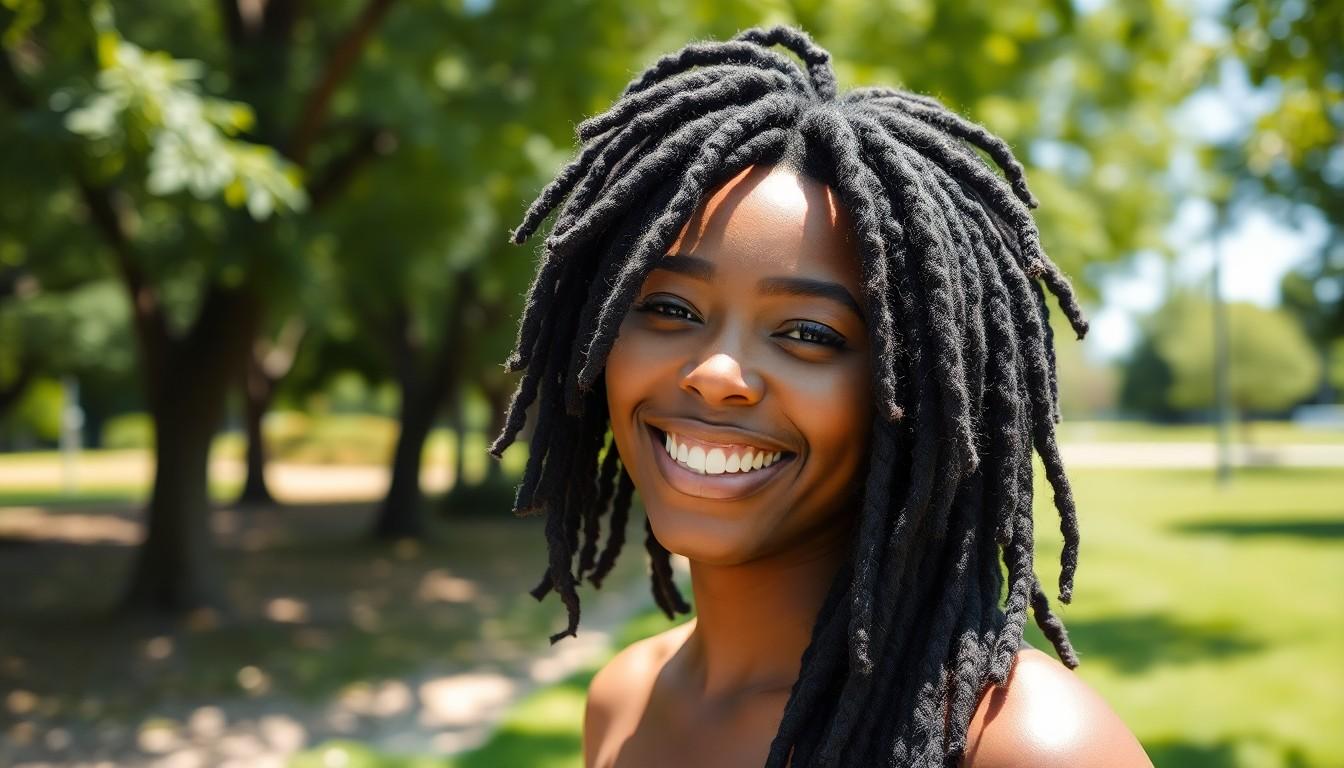
Let’s talk about why so many of us are drawn to freeform dreads and what makes them a standout choice. The reasons go deeper than surface style, connecting us to culture, health and a more natural way of caring for our hair.
Embracing Natural Hair Growth
We see freeform dreads as a celebration of our hair’s natural pattern. Each of our locs forms organically, taking its own path without us needing to twist, part, or force it into shape. That individuality is a big part of the appeal. Freeform dreads don’t need gels, waxes, or chemicals, which means we’re not exposing our hair and scalp to extra ingredients. Skipping the products lets our natural hair texture shine, creating one-of-a-kind patterns. Our roots enjoy a little extra volume too, growing into a thick, soft afro bed that stands out from any other style. Choosing this approach means we let our hair develop in its healthiest state, looking authentic and uniquely ours.
Promoting Scalp Health and Low Maintenance
Sometimes, less really is more. We love freeform dreads because they make hair routines a breeze. No more constant retwisting or separating—our locs thrive with minimal handling, saving us time and effort. Plenty of us notice our scalp feels better, as avoiding tight styles and frequent manipulations lowers our chances of irritation or damage. With no harsh detangling sessions or pulling from combs, our hair keeps its strength, and breakage becomes rare. Healthier scalps and strong locs naturally follow. Freeform dreads are about letting our hair take care of itself, and that choice pays off every single day.
Starting Your Freeform Dreads Journey
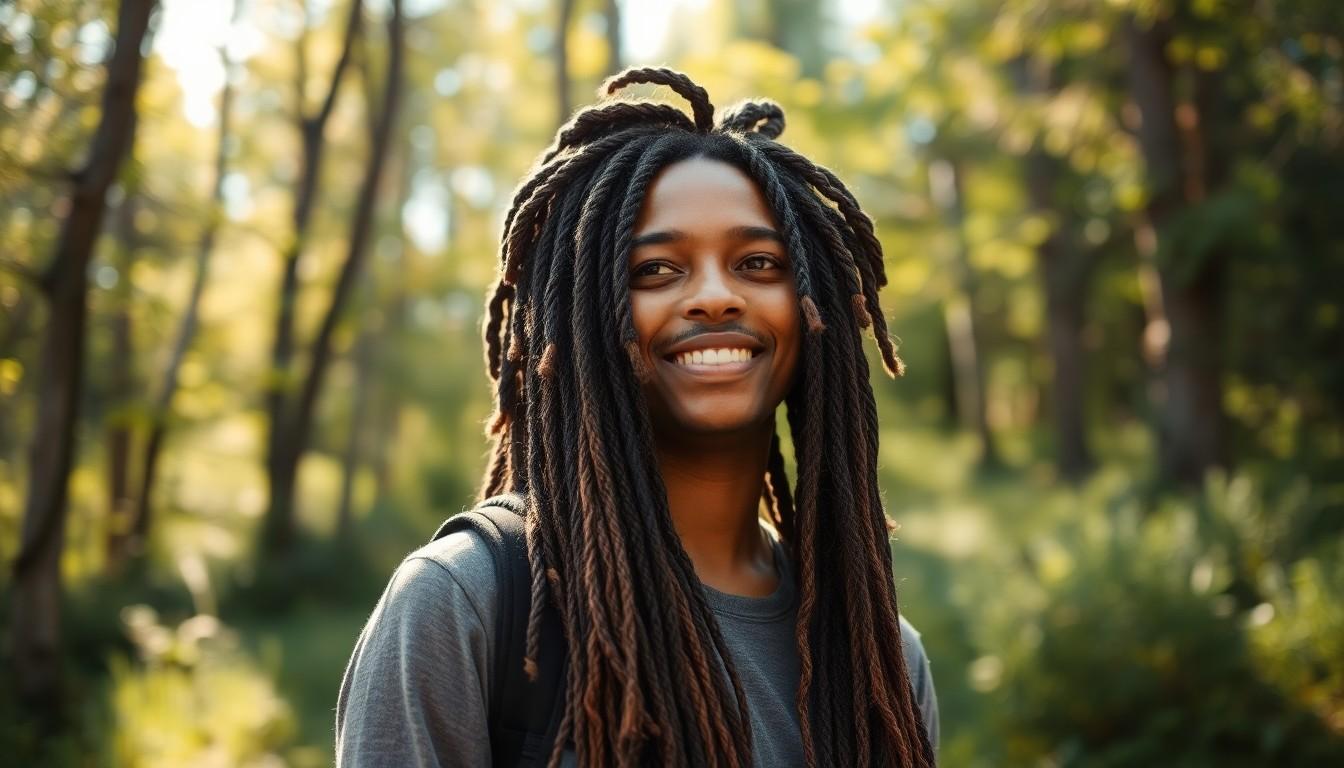
Choosing to start our freeform dreads journey means embracing our hair’s natural path and discovering a truly personal look. We don’t need to follow rules—just let our hair express itself, starting with a clean canvas and a simple routine.
Preparing Your Hair and Scalp
First, let’s make sure our hair and scalp are really clean. We always go for a residue-free shampoo to wash away any buildup, which helps our locs form without anything getting in the way. By keeping our scalp fresh and clear, we’re setting up a solid foundation for the locking process.
After washing, we section our hair based on how thick or thin we want our locs. Smaller sections give us skinnier locs, while bigger sections create chunkier ones. The actual size depends on how thick or dense our hair already is, so we let our natural texture guide us.
Techniques for Beginning Freeform Dreads
We kick things off by washing our hair thoroughly and dividing it into sections—this way we’re deciding early on how the locs might take shape over time. Sometimes we create single braids or twists, but we avoid using any products that might help the hair grip. Other times, we might skip braiding or twisting altogether and just let our hair air-dry and settle as it wants.
Next, we leave our hair alone as much as possible. Freeform dreads are all about minimal manipulation. There’s no need for combs, gels, or styling tools that could mess with our hair’s natural growth pattern.
As the weeks go by, we watch our hair lock and tangle on its own. Each loc forms with its own twist, size, and texture. This process highlights our individuality, since each head of hair creates a unique set of locs.
Whenever we wash our hair, we make sure our dreads are dried completely. For those of us with thicker locs, a hair dryer can help speed things along and prevent moisture buildup.
We wash regularly with a residue-free shampoo to keep our scalp and hair healthy. A clean base helps every loc thrive.
To keep things healthy, we also moisturize our scalp using natural oils. This step supports the growth and comfort of our freeform journey, letting our hair do its own thing while staying nourished.
Freeform dreads celebrate the unique texture and pattern of our own hair, and starting this process is all about keeping things simple, clean, and authentic.
Caring for Freeform Dreads: Essential Tips

Freeform dreads need thoughtful care to keep them looking their best and to support healthy hair and scalp. Let’s break down the most important routines for cleaning, washing, moisturizing, and preventing breakage so our locs always stay fresh and strong.
Cleaning and Washing Freeform Dreads
We wash our freeform dreads every one to two weeks, focusing on the scalp to prevent buildup and thinning. A residue-free shampoo keeps our hair and scalp clean without leaving gunky deposits. Hot water works well for washing, but a cool rinse helps close the scalp and lock in cleanliness. Once clean, it’s important we allow our dreads to dry fully—using a hair dryer is sometimes necessary if our locs are very thick or slow to dry naturally. This way, we prevent mildew and keep our hair smelling fresh.
Moisturizing and Preventing Breakage
Keeping our dreads hydrated is key to avoiding breakage and frizz. We use natural oils such as jojoba, coconut, or olive oil on the scalp, but we’re careful to not overdo it since too much oil leads to buildup and attracts dirt. Switching out cotton towels and pillowcases for moisture-friendly fabrics helps protect our locs from drying. At night, we make it a habit to cover our hair so it stays moisturized and safe from breakage as we sleep. Each step supports the strength and look of our freeform dreads, so they thrive and reflect our individuality.
Addressing Common Myths and Misconceptions About Freeform Dreads
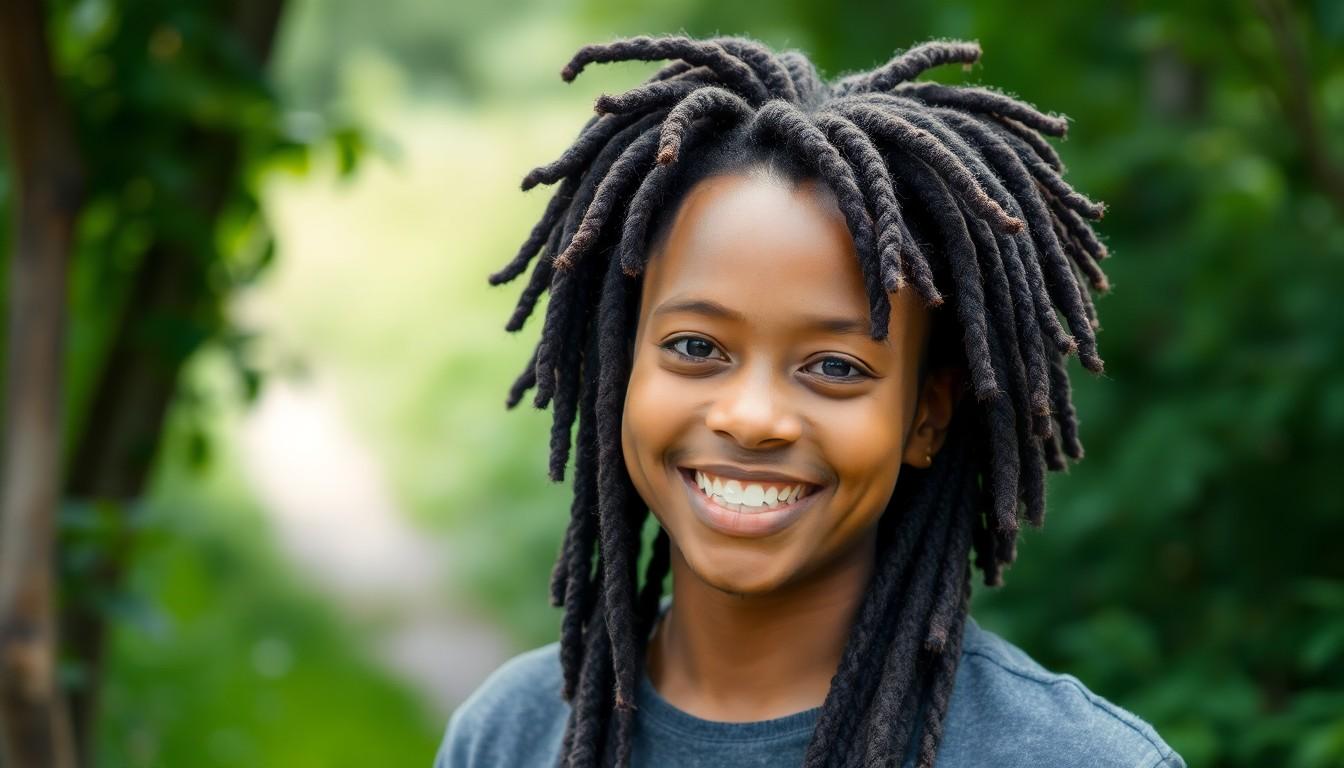
Let’s clarify a few things that get misunderstood about freeform dreads—because we’ve heard these myths too many times.
Myth 1: Freeform dreads are unpredictable and unmanageable
Some people believe letting your hair grow without shaping means trouble. We know that freeform dreads naturally take on different shapes, but that’s the beauty of it. Unique results happen when curls and coils lock on their own, and many of us find the journey pretty appealing. Our hair thrives when we give it freedom—no micromanaging required.
Myth 2: Freeform dreads require no care at all
It’s easy to think we can just leave freeform dreads alone and skip all maintenance, but that’s not quite true. Actually, we still need to wash our dreads and keep our scalp clean, just without the daily twisting or heavy products. This approach makes things simple, but some effort is always needed to keep our hair healthy.
Myth 3: Freeform dreads always look messy
We often hear this from those unfamiliar with the style. The look of freeform dreads really celebrates our natural texture and growth. What some call “messy” is just evidence of authenticity—it’s what sets our look apart and gives it character. A lot of us actually choose this style because it reflects who we are.
Myth 4: Freeform dreads take forever to form
Questions about timing come up a lot. Depending on our hair type, freeform dreads can start forming anywhere from a few months to about a year. Coarser, kinkier textures might lock quicker, while finer hair can take a bit longer. Everyone’s journey is different, and that’s what makes the process personal.
Let’s keep the facts in focus—freeform dreads are all about embracing what’s natural, with just enough care to let our individuality shine.
Showcasing Freeform Dread Styles and Inspirations

We see freeform dreads celebrated for their individuality and versatility. Let’s look at some popular ways to wear this powerful, natural style and the well-known faces who inspire others on their own freeform journey.
Popular Freeform Dread Looks
You’ll find the classic freeform dread style stands out for its organic, untamed look. Thicker, naturally formed locs grow without any intentional styling or manipulation, highlighting the uniqueness in our hair’s natural pattern. Some of us let these dreads fall long and flowing, pulling them to one side for an eye-catching, effortless style that shows off their intricate shapes. Others choose a half-up, half-down look, keeping hair out of the face while making sure the freeform sections remain visible and authentic. Each variation lets us embrace our texture, giving our hair the freedom to evolve but it wants.
Celebrity Examples With Freeform Dreads
Fans of music and culture instantly recognize Bob Marley and Damian Marley as iconic symbols of this natural style. Although the Marleys may not have grown freeform dreads in the strictest sense, their locks represent what it means to wear our hair with pride and cultural meaning. On stage and in public life, these artists inspired countless others to accept their natural hair journey. Looking around today’s music scene, we see freeform dreads as a badge of self-expression, individuality, and deep respect for heritage—qualities that speak powerfully in every texture and curl we display.
Tackling Challenges and Solutions With Freeform Dreads
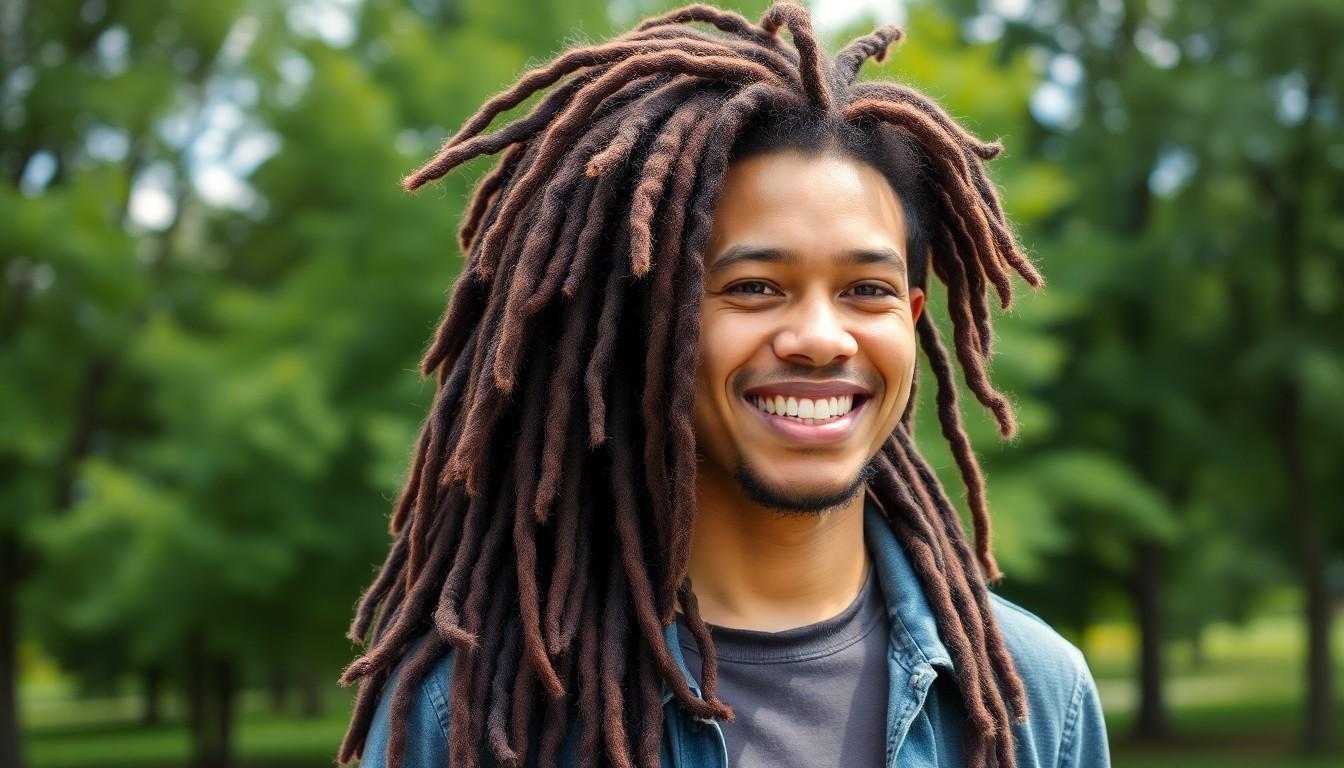
As we continue our freeform dreads journey, we’re bound to encounter a few common hurdles. Let’s look at practical ways to handle two of the biggest challenges people face: frizz and societal perceptions.
Dealing With Frizz and Loose Hairs
Everyone experiences frizz and loose hairs with freeform dreads—it’s part of the process. We accept that our natural hair texture isn’t meant to be perfectly controlled. Over time, frizz and stray strands usually work themselves into the locs, adding thickness and volume at the roots. Instead of fighting the fuzz, we let it blend in, knowing it’s a sign our hair is locking naturally. Shampooing regularly with residue-free products keeps our scalp healthy without interfering with the forming dreads or making frizz worse. Choosing not to use gels or wax lets our locs breathe and settle in on their own timeline.
Handling Societal Perceptions and Workplace Concerns
Some of us run into negative perceptions about freeform dreads in public or at work. Wearing our hair this way carries cultural, spiritual, and personal meaning, but not everyone understands that. Facing stereotypes or questions about professionalism, we find it helps to stand confident in our choice and educate others about the history and authenticity behind freeform dreads. Discussing their cultural roots and highlighting the natural, low-maintenance approach often shifts the conversation. Many who commit to freeform dreads gain a sense of self-esteem and pride, helping us navigate any workplace concerns with dignity. We also avoid hairstyles that pull on our roots, making sure our hair stays healthy while sending the clear message that individuality deserves respect.
Maintaining Healthy Freeform Dreads Over Time
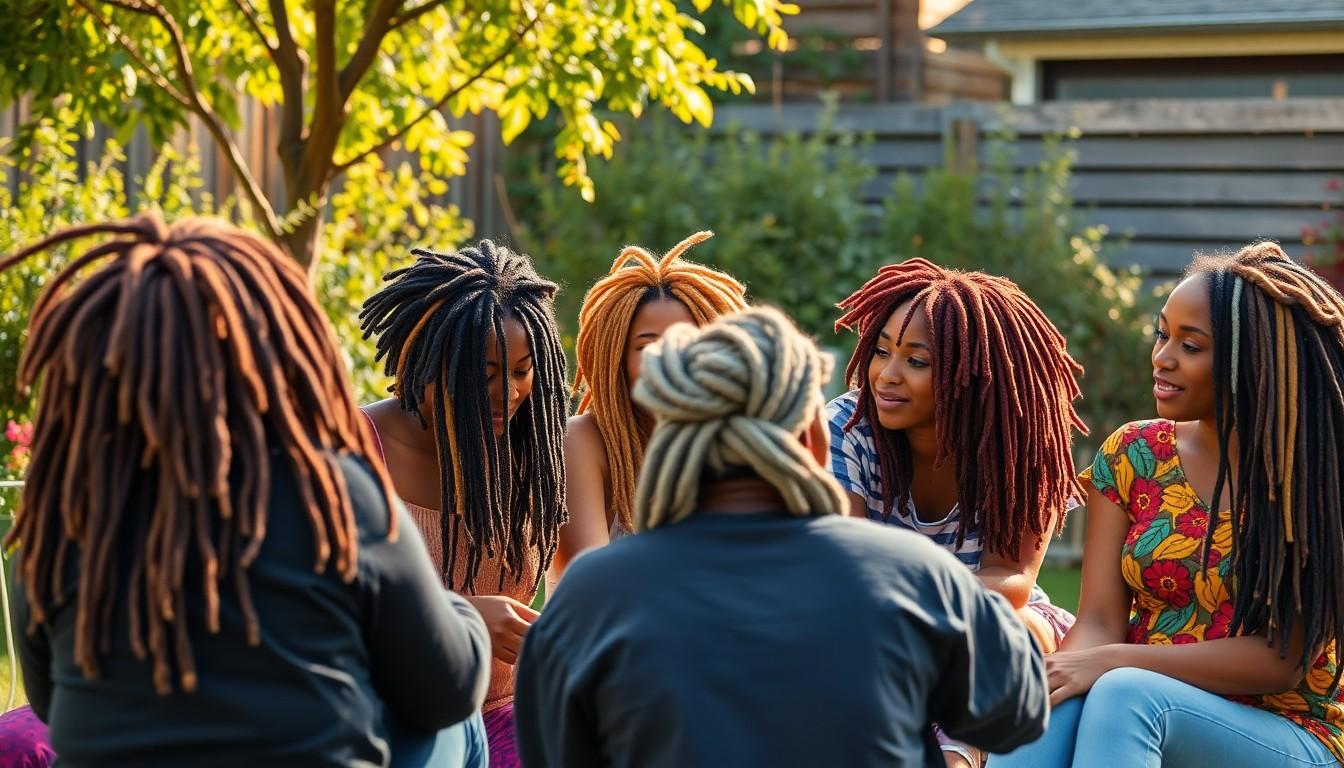
We know keeping freeform dreads healthy means more than just letting them be—some care and choices make all the difference. Locs thrive with attention to washing, gentle maintenance, and refreshing routines as our needs change.
Trimming and Shaping When Necessary
Sometimes, locs need a trim to avoid excess weight that can cause breakage. If we notice ends looking rough or our dreads feel too long, a simple trim can preserve overall strength. Freeform dreads usually don’t need frequent shaping, but in rare cases with semi-freeform styles, separating and gentle twisting can keep them the size and shape we want. Rather than strictly defining each dread, quick maintenance like rolling them in our palms or wrapping loose hair around problem areas helps locs stay tidy without sacrificing their natural form.
Refreshing Your Routine for Long-Term Hair Health
Adjusting our care habits keeps dreads vibrant for years. We might need to tweak our washing schedule if our scalp gets oily or dry. Washing our dreads once or twice a week with a gentle, sulfate-free shampoo is ideal for most, but we can cut back or increase as our scalp needs. Using water-based leave-in sprays keeps our hair hydrated without buildup, and we skip oil-heavy formulas that can weigh down our locs fast. Sometimes, our scalp benefits from natural oils like jojoba or coconut—just a touch is enough.
We always choose residue-free, silicone-free shampoos for gentle cleansing and avoid heavy conditioners. Protecting our hair at night by wearing a satin scarf or using a pillowcase that won’t dry out our locs helps lock in moisture. Microfiber towels are our go-to after washes since they prevent frizz and keep our dreads from snagging. When routines fit our lifestyle, and products work for our needs, our freeform dreads stay healthy, defined, and easy to manage for the long haul.
Conclusion
Choosing freeform dreads is about more than just hair—it’s a commitment to authenticity and self-acceptance. As we embrace this journey together we celebrate the freedom to let our hair form its own unique story.
Let’s continue to honor the history cultural roots and individuality that freeform dreads represent. With the right care and mindset we can enjoy healthy thriving locs that reflect who we truly are.
Frequently Asked Questions
What are freeform dreads?
Freeform dreads are a natural method of growing locs by allowing hair to lock and form organically without manipulation, styling, or heavy products. Each person’s dreads develop unique patterns and shapes, reflecting their individual hair texture and natural growth.
How do I start freeform dreads?
Start by washing your hair with a residue-free shampoo and keeping your scalp clean. Avoid combing or manipulating your hair—just let it grow freely. Regular washing and patience allow your hair to form natural sections and eventually lock into dreads.
Are freeform dreads suitable for all hair types?
Yes, anyone can grow freeform dreads, but the results vary based on hair texture and thickness. Tighter curls tend to lock faster, while looser textures may take longer. The journey and final look will be unique to each person.
Is maintaining freeform dreads difficult?
Freeform dreads are generally low-maintenance compared to other loc styles. Basic care includes washing every one to two weeks, keeping your scalp clean, moisturizing occasionally, and protecting your hair at night. Minimal manipulation is required.
Do freeform dreads damage your hair?
No, freeform dreads can actually be healthier for your hair and scalp because they avoid frequent styling, tension, and harsh chemicals. Maintaining cleanliness and proper hydration helps prevent breakage and scalp issues.
How long does it take for freeform dreads to form?
The time varies depending on hair type, length, and care routine. Most people notice significant locking after four to twelve months, but some may see changes sooner or later. Patience is essential for allowing natural locking.
Can I wash my freeform dreads regularly?
Yes, regular washing is important. Wash your dreads every one to two weeks using a residue-free, sulfate-free shampoo. Focus on your scalp and ensure you rinse and dry thoroughly to prevent mildew or buildup.
How can I keep my freeform dreads moisturized?
Use natural oils like coconut or jojoba oil sparingly to keep your scalp and dreads hydrated. You can also use a water-based leave-in spray. Avoid heavy creams or waxes, which can cause buildup and attract lint.
Do freeform dreads always look messy or unkempt?
Not necessarily. Freeform dreads have a unique, organic appearance that some may consider less “neat” than styled locs, but this look reflects authenticity and natural beauty. Regular washing and proper care keep them healthy and fresh.
Can I style freeform dreads?
Yes, freeform dreads can be styled in various ways, such as half-up, half-down looks, using headbands, or tying them back. While they celebrate individuality, there’s room for creative expression within the natural form.
What should I do about frizz or loose hairs?
Frizz and loose hairs are common and part of the natural locking process. Embrace them as signs of healthy development. Gentle palm-rolling can help, but avoid over-manipulating. Over time, many loose hairs will integrate into the dreads.
Are freeform dreads connected to a specific culture?
Freeform dreads have deep roots in Black culture, especially in communities of African descent. They also appear in various ancient civilizations, such as Egypt and India, and gained prominence through the Rastafari movement. Today, they’re embraced by people worldwide as symbols of authenticity and self-expression.
How do I protect my freeform dreads at night?
Cover your dreads with a satin or silk scarf or use a satin pillowcase to reduce friction while you sleep. This helps prevent breakage, dryness, and lint buildup, keeping your dreads healthy and strong.
Will I face negative perceptions with freeform dreads?
Some people with freeform dreads may encounter stereotypes or judgment, especially in certain workplaces or public settings. Confidence, understanding your style’s cultural significance, and educating others can help address and overcome these challenges.
How can I maintain healthy freeform dreads long-term?
Trim occasionally to prevent split ends, stick to gentle washing routines, and moisturize as needed. Adjust your care routine if your scalp’s needs change, and always protect your dreads at night. With proper care, freeform dreads can remain healthy and vibrant for years.

